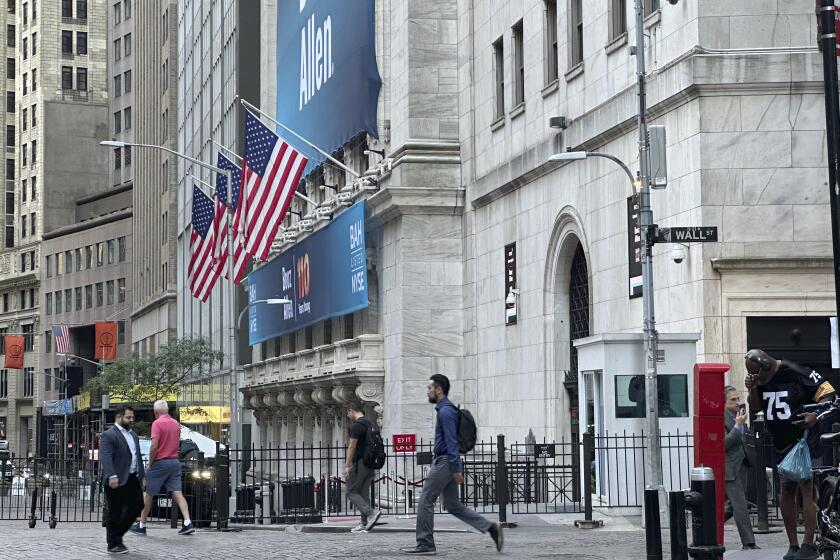U.S., Japan Closer to Pact on Patent Procedure : Technology: The two countries’ different ways of granting patents have caused trade friction and a multitude of lawsuits.
- Share via
TOKYO — As many an American inventor has found out the hard way, build a better mousetrap and companies in Japan will beat a path to their own patent office to claim some variation on the idea as their own.
What’s more, a well-made, inexpensive, made-in-Japan version of that mousetrap might emerge later and win market share in the United States.
But the days may be numbered when a Japanese firm can easily imitate a foreign discovery with only minor mutation. The United States and Japan appear to be moving toward an agreement on how to “harmonize” their very different ways of granting patents.
“We’re moving quickly from friction over patents to harmonization,” said Shoji Tada, an official at the Japan Patent Office, which is under the Ministry of International Trade and Industry.
A compromise may not come too soon for some Japanese firms. Many of them are being forced to pay high penalties to American firms and inventors who have gone to U.S. courts in recent years to claim infringement on their patents.
Last spring, in a notable case, Minolta camera company was forced to pay $127.5 million after Honeywell filed a lawsuit contending that it had invented the autofocus system used in almost every Japanese camera. Other Japanese firms face similar Honeywell claims.
Such well-publicized disputes over high-tech patents, as well as over drug designs and computer software, have encouraged many U.S. firms to defend their patents in court.
Often, Japanese firms are easy targets in what has become known in Japan as “patent wars.” The Nikkei business newspaper estimates that Japanese firms face about 1,000 patent disputes. “There’s still a big gap in concept between the U.S. and Japan on what is infringement of a patent,” said Yoshikazu Takaishi, general counsel for IBM Japan.
In a 1990 Japanese Machinery Exporters Assn. survey, 173 Japanese firms reported that they were involved in 207 patent-infringement suits filed by foreign firms, mainly American.
“U.S. industry has been slowing down, and companies are going to court to protect their patents and make more money,” said Akira Okawa, a private patent attorney and former chief examiner in the Japan Patent Office.
Most of the U.S. victories rely on judgments by American juries. “We don’t have much experience with a jury system,” Okawa said. “And U.S. juries are politically biased against Japanese companies.”
The exporters association also found that in 248 cases the Japanese firms settled out of court. Most settlements were cash payments, but some resulted in cross-licensing agreements and payment with special technology.
“These lawsuits are added pressure on us to harmonize the Japanese patent system with the U.S. system,” Okawa said. They also have spurred Japanese companies to beef up their patent offices and learn more about U.S. patent law.
More than just a money-maker for U.S. firms, however, the lawsuits are a visible example of a decade-long push by the U.S. government and industry to fight back against Japan’s economic challenge and to improve American competitiveness by better protecting U.S. intellectual property rights, which include patents, copyrights and trademarks.
In various political arenas, U.S. officials have tried to pressure Japan to alter its patent system. In the mid-1980s, they went to the World Intellectual Property Organization in Geneva. Frustrated there, they linked patent reform with other issues at the Uruguay Round of multilateral talks aimed at expanding the present world trading system.
As the Uruguay Round has stalled, the United States has put direct pressure on Tokyo in bilateral talks known as the Structural Impediments Initiative. One result was a promise by Japan in 1989 to reduce approval time for patents to two years by 1995, down from five to six years.
The shorter approval time, if achieved, might reduce a more basic irritant for the United States: Japan requires that applications be opened for all to see 18 months after filing.
A competitor of a patent filer can thus have access to a discovery several years before it is protected. In contrast, the United States keeps patent applications secret until approved, with the process taking about 18 months.
Exposing an inventor’s work has helped Japanese companies “avoid the waste of time in coming up with the same ideas,” said Tada, who admitted that this increases the chances of “imitating” inventions.
“The logic is that we give an inventor the right to the technology and in return he must make it available for society,” he said. In contrast, the United States protects the individual’s right to invention, not society’s claim on it, in hopes of spurring creativity.
“Philosophical differences between the U.S. and Japan patent systems will remain for a long time,” said Okawa, adding that “we already have enough ‘creativity’ incentives within Japanese industries. In Japan, we have a balance between the rights of patent holders and society. In the U.S., they don’t care about society.”
To speed up its approval process, the Japanese patent office has added computers, raised filing fees, told companies not to file numerous “minor” patents, and added more examiners. But Takaishi said, reducing the examining time to two years “will be very difficult.”
The number of patents filed each year in Japan has more than doubled in the past 15 years, reaching 370,000 last year.




